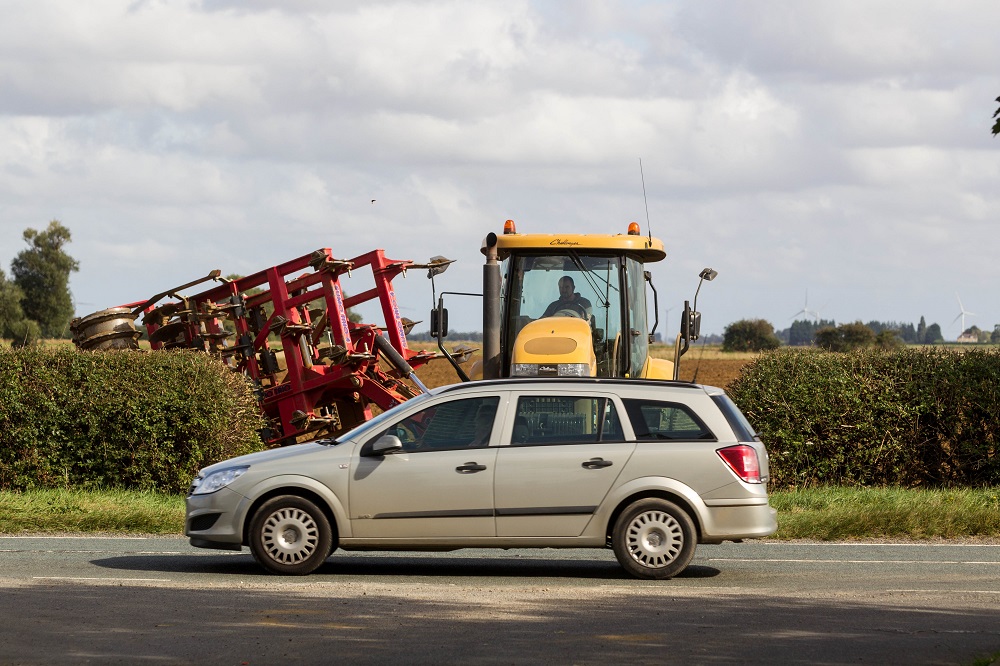I share the frustration of The National Association of Agricultural Contractors (NAAC) at the statement from the Department for Transport (Dft) that it will no longer proceed with ‘Phase 2’ of increases to the combination weight limits of agricultural tractors and trailers.
Trailer-weight legislation is 30 years old and in that time, agricultural developments have moved on. High capacity trailers keep up with the large harvesting machinery that’s in use nowadays as well as keeping vehicle movement on the road to a minimum.
The long-overdue change in legislation started back in March 2015. ‘Phase 1’ of amendments increased the maximum combination weight of a tractor and single trailer from 24.39t to 31t, although the maximum laden weight of trailers remained unchanged at 18.29t.
What’s more, the NAAC has spent the past eight years working towards further trailer weight increases as part of ‘Phase 2’ of changes. However, on 3 Feb, the DfT announced that it will not proceed further with regulatory change. So there won’t be any further trailer-weight increases.

Current restrictions on tractor/trailer weights may be frustrating. But before we venture onto the public highway, can we be confident in the safety of the machinery we’re putting in front of traffic, and in the experience and training of the person in the tractor seat?
The DfT has been quite reticent in putting forward their reasons for not implementing ‘Phase 2’, and that’s a further frustration. But perhaps it’s time to look within our own industry and consider the benefit of regulatory roadworthiness testing for certain tractors and trailers.
Currently the industry is pretty much self-regulating – machinery is expected to be in a roadworthy condition and many argue that for the limited time a tractor is on the road there’s no need for any type of official test certificate. One of the arguments is that it would add another layer of red tape to an already overburdened industry.
In 2014, the EU decided not to implement an MOT-style test for tractors capable of travelling at 40km/h and trailers weighing more than 750kg, much to the relief of various UK farming unions.
There’s no doubt the voluntary Farm Vehicle Health Check scheme is a hugely beneficial initiative, introduced by the NFU, NAAC and BAGMA. But I feel it’s only of use to the conscientious operator. In essence, these are probably the same people who would willingly submit their high speed and high-capacity trailers for an MOT-type inspection to prove their roadworthiness. They’d then be secure in the knowledge that if an accident were to occur, it wouldn’t be down to badly maintained machinery.
The problem is with operators who fail to maintain tractors once they are out of warranty, or who don’t brake test their trailers. Maybe they’re not aware there’s something wrong or have an “it’ll do” attitude. Generally, the only time this machinery comes to light is after an accident, while if it had undergone some type of official test, that accident may never have occurred.
How do we deal with this in a self-regulating industry, and how much confidence will that give the DfT that we are ready for ‘Phase2’? I don’t really know whether an MOT-type test would help, but something with regulatory clout, designed by people inside the industry, may go some way towards achieving what we need.
It’s worth noting that a tractor is not a lorry, so a similar test wouldn’t work. It’s also worth noting that at a total of 31t and a road speed of 40km/h, some tractor/trailer combinations are longer than lorries, heavier than lorries and in the wrong hands or badly maintained, just as destructive in an accident.
What’s more, there’s a very good argument for a review of driver testing and training. The current test for a licence to drive a car no longer gives entitlement to tow a trailer, but a youth of 17 can take a tractor test and be hauling up to 18.29t on the highway within five mins of passing it.
So it is frustrating, and it’s disappointing that the promised improvements to tractor/trailer legislation are now unlikely to proceed. But should we not be doing more to build public confidence in our ability to handle large heavy items of machinery on public roads? And it’s not just about public confidence either – I ensured my daughter completed a tractor and trailer driving course at Moreton Morrell College before she was allowed to take over 20t of rubber and steel down the drive, let alone out onto the highway.




